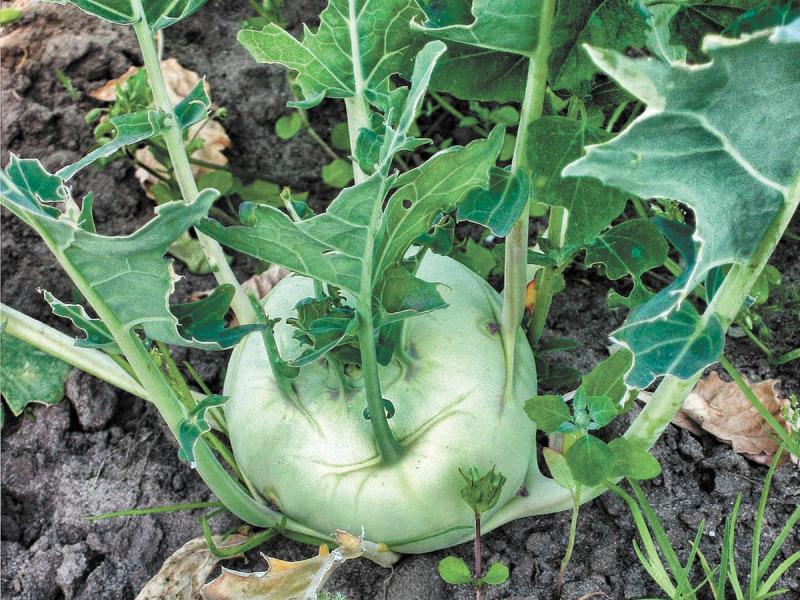Kohlrabi prefers mild or cool weather
To survive in the cold of the Himalayas, the native goats grow an exceptional fleece with fiber six times finer than human hair. This wool from Kashmir (Anglicized to cashmere) is up to eight times warmer than sheep's wool. For centuries, this precious cashmere was traded to Europe. But the trade wasn't one way, and from Northern Europe an odd vegetable was introduced to Kashmir, the kohlrabi.
With a sweet taste often described as a blend of a turnip and water chestnut, the kohlrabi (Brassica oleracea var. gongylodes) is a crucial ingredient in the Kashmiri diet. Kohlrabi is grown for its enlarged, edible stem. It is eaten raw or cooked, with a crunchy, crisp texture and very mild, sweet flavor. Kohlrabi is either green or purple.
A member of the cabbage family, the green, white or purple kohlrabi globes are cooked into fries, while its cabbage-like leaves can be tossed into salads or lightly steamed and served with butter. You can even eat the stems raw like celery.
Picked young, kohlrabi leaves and bulbs can be eaten in stir fries.
Popular varieties include Purple Vienna and White Vienna. Azur Star is probably the best open-pollinated purple kohlrabi. The variety Konan hybrid is an All-America Selection winner, with pale-green, crunchy flesh that retains the flavor of a good turnip. Blue Delicatesse has a delicate bluish-purple color, while its relative, the White Delicatesse, sports a white bulb with just a hint of green. Both are offered by Victory Seeds (www.victoryseeds.com or by mail PO Box 192, Molalla, OR 97038).
Kohlrabi prefers mild or cool weather. It is grown throughout the season starting in early spring. Sow the seeds directly in the garden about an inch apart and one-quarter to one-half inch deep, in rows 12-18 inches apart. After the seeds germinate, thin the plants to stand four inches apart. If you are growing them for storage, give them about 10 inches between plants. Plant the seeds soon after your last frost, because they do best in cool, mild temperatures. You can start seeds indoors for earlier crops.
Kohlrabi grows best in rich, fertile soil. Keep the plants well watered, which encourages rapid growth and sweeter flavor. They should be fully grown and ready to harvest in about 60 days. As a cool-weather crop, you can also plant kohlrabi about 90 days before your first frost.
You can dig up the roots when they are two to three inches around. Storage varieties can be left to grow up to eight inches in diameter. If your kohlrabi is attacked by flea beetles, you can cover the plants with a light row cover.
Kohlrabi bulbs can be used in a variety of ways. Raw kohlrabi can be grated and used in salads, or the bulb can be chopped finely and incorporated into soups. Steamed kohlrabi can be also be added to soups. Shredded kohlrabi can be made into fritters or vegetable pancakes, while roasted kohlrabi is a great winter treat. Kohlrabi greens can also be eaten when young. Kohlrabi will keep for several weeks in your refrigerator.
For something truly unusual, grow kohlrabi, and you will have nutritious turnip-like crops in just 60 days. Best of all, like cashmere goats, kohlrabi grows perfectly in the cold.














































